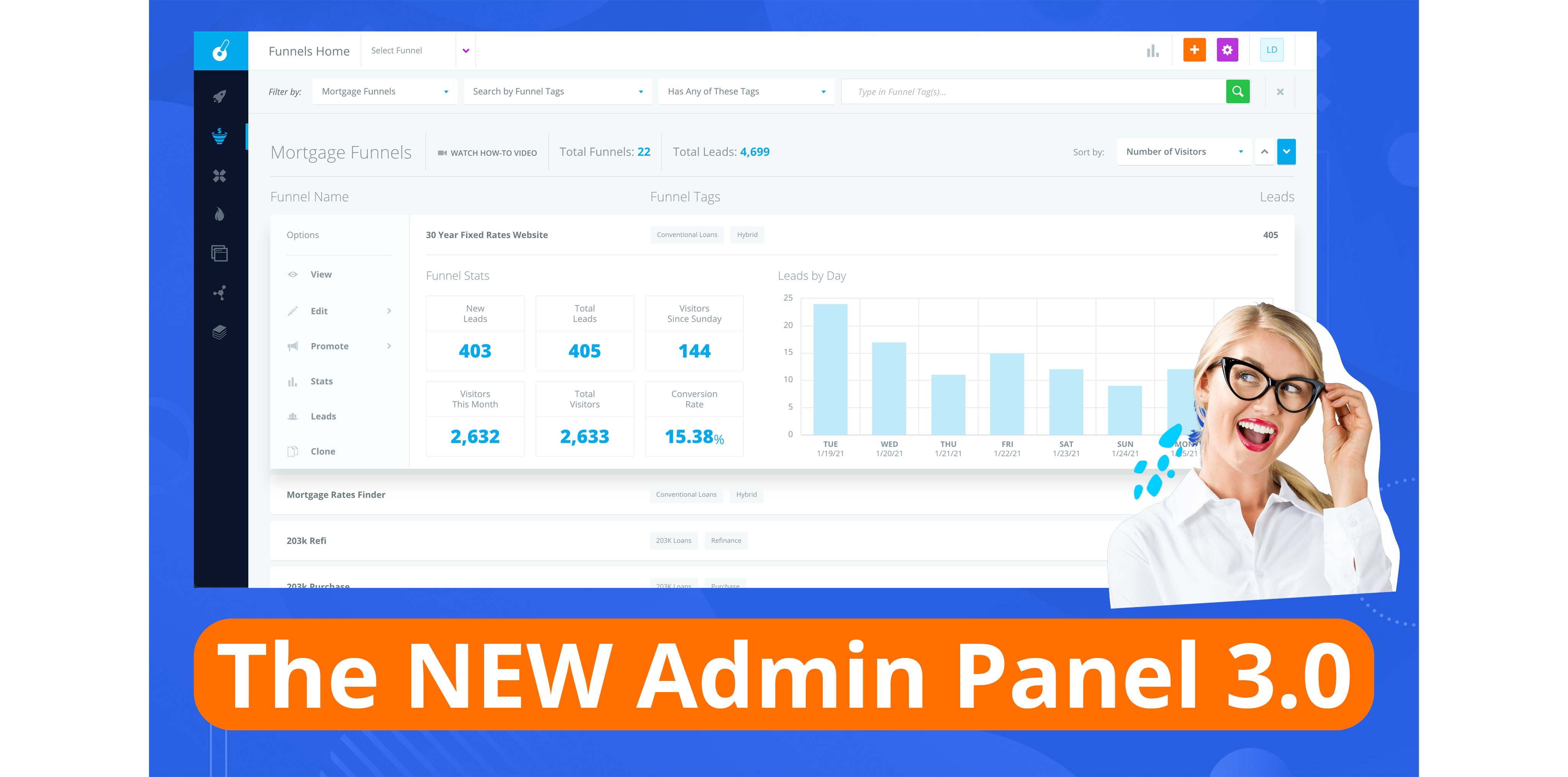Your lead capture page might just be the lifeblood of your business.
Does it have everything it needs?
If the answer is no—or even “I don’t know”—it’s time to check in on the health of your lead capture page.
For real estate and mortgage companies, generating new leads should always be a priority.
But when it comes to checking on the quality of its landing pages—the funnel of their entire digital marketing apparatus—you’d be surprised at how often they check on it.
To that end, it’s time to perform a checkup.
Does your real estate lead capture page have all of the essential elements in place?
We’ll evaluate this by looking at three distinct categories of elements:
- Psychological elements: The elements of persuasion and marketing that bring in potential customers and entice them to click to the next step. Bottom line: is your lead capture page psychologically enticing, or does it do little to stir the emotions of the intended reader?
- Practical elements: Is it easy to identify, say, a call to action? Does the load time mean that more people click “back” then click forward?
- Design elements: Is the page difficult to navigate? Where can people find the essential buttons to figure out what to do if they do want to click forward?
With these essential elements in place, you’ll have a powerful real estate capture page that generates interest and potentially boosts revenue.
Without them?
Well, let’s not find out what happens without them.
Psychological Elements
It starts with creating a psychologically-enticing lead capture page.
Bottom line: is your page engaging enough to make people want to click through to the next stage?
There are a lot of different psychological triggers that work into making a successful lead capture page.
- “Features tell, benefits sell.” The best way to think about how to create a real estate lead capture page is to think like a potential lead yourself. You wouldn’t expect to be thrilled by a potential real estate deal by reading a list of features, would you? But if you can expound on the benefits of what they’ll have when they sign up with you—or join your newsletter, for example—then you’ll stand a greater chance of compelling them to action. One example of a “feature” of owning a home, for example, is that you can have your own land. But the benefit of this feature is the secure feeling of knowing that you have a place to plant your flag. That’s the difference.
- Reciprocation. One of the most powerful pillars of persuasion from Robert Cialdini’s “Influence,” reciprocation is a top marketing tactic—because it works. Reciprocation means that you’ll first give your potential leads something before ever expecting something in return. For example, if you can entice potential leads with a free mortgage calculator, you can often leverage that into them reciprocating that favor by signing up for your email list.
- Consistency. Your lead capture page needs to tell a small slice of your potential customer’s story. What’s that story? They see themselves as wise financial investors. Maybe they’ve come to your site because they believe that owning their own home is a wise financial decision. You can help that perception by highlighting the benefits of owning a home, for example. A mortgage calculator is another way to reinforce that “consistency” in their beliefs; give them an opportunity to do the homework themselves and you’ll build trust.
- Social proof. Social proof is evidence that the service you offer is something that’s work for other people before. Whenever you can incorporate quotes from previous clients, client testimonials, video testimonials, and anything that suggests that the services you offer, you’ll make a lot of progress towards securing more leads from your capture page.
Practical Elements
Once you’ve made sure that your real estate lead capture page is psychologically compelling, there’s another set of elements you can’t afford to ignore.
You have to make the page practical.
Sure, a potential lead might be motivated to work with you. But unless they know how to do that, they’re not going to do much.
Let’s look at some of the most important practical elements you’ll need to incorporate on your lead capture page:
- Page speed. How quickly your page loads is of the utmost importance. We know that your bounce rate will go higher as your page speed slows down. Why not get out of your way and make sure that your page loads quickly enough to satisfy leads? Take a page speed test today to find out how your site performs.
- Call to action (CTA). The call to action is a basic element, such as a link or a button, that gets the customer to think about the next step. What does your call to action say? Is it easy to see, or does it blend into the background? Do you make your potential leads scroll down to find it, or is it highlighted on a section of your site that’s easy to spot? Do you include a “Sticky Bar” that makes it extra-obvious where your leads can find your call to action?
- Analytics. Do you have analytics in place to measure and track what leads are doing on your page? If not, you won’t be able to run high-quality A/B tests to compare different elements on your real estate lead capture page. You won’t be able to see what sorts of traffic sources and keywords people are using to discover your lead capture page.
Design Elements
Finally, the design elements of your lead capture page are all about how it comes together.
Some of these design elements might overlap with the other essential elements in this post. For example, your call to action needs to coincide with design principles like keeping the CTA “above the fold” for as much visibility as possible.
You should also try to make sure that you don’t provide too many choices for the potential lead. You don’t want to have them navigating all over your site when the goal of your lead capture page is to funnel traffic through one area in your sales funnel.
Here are some other design elements you should keep in mind:
- Brand consistency. Do you use a simple color palette that fits with the rest of your brand, or do your color choices make your logo stand out—and not in a good way? These sorts of inconsistencies can make people distrust your brand, as they suggest you’re not using professional-grade marketing materials to capture leads.
- Highlighting the CTA. Your design needs to make your CTA contrast with the rest of the page without clashing with it. That means not only keeping it “above the fold” when it comes to scrolling, but it should stand out relative to its background space. Fortunately, there are great templates you can use to make sure that this process is automatic—without relying on a pricey custom design.
Want great ways you can practice all of the essential elements for a real estate lead capture page on your next creation? Sign up for a free trial of leadPops to make sure you have everything you need to make leads happen for you.








